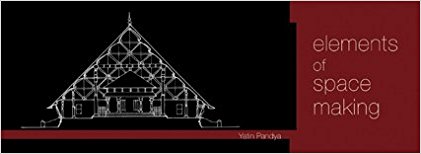Elements of Spacemaking describes the grammar and vocabulary of ‘reading’ architecture and urban spaces. The language of spacemaking is not commonly understood in our society, not even among the intelligentsia. Its role in producing better living environments is therefore, not easy to appreciate. Thus, when people inhabit space and respond to its characteristics, they do so without understanding its nature or inherent qualities. People, of course, form subjective opinions about environments they live in, but that is not the same as developing an objective understanding about it, which would enable them to make informed choices about the quality of spatial experience. A visually ‘literate’ society is therefore a precondition to creating good habitats just as literacy is necessary for creating an empowered polity. It is said that one of the conditions of civilization is the creation of livable and lovable cities. It contributes to the development of urbanity. Among its other attributes, urbanity is associated with the cultivation of the visual language to produce a discriminating and urbane citizenry.
The deplorable conditions prevailing in our cities, however, provides prima facie evidence that our society has not cultivated this civilizational virtue, at least, not in the manner that Walter Benjamin described in the Arcades Project, his seminal study of the cultural transformation that took place in mid-nineteenth century Paris, when France was undergoing a similar process of modernization and urbanization as India is today. There is no equivalent to Benjamin’s sophisticated flâneur in the new urban society in India. Instead, our urban spaces are dominated by social and psychological deviants who make it difficult for ordinary citizens,

